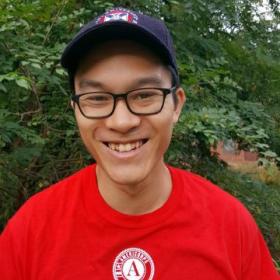Primary Care: What Drives Me
(Meghalaya Root Bridge, Meghalaya, India)
Eyes glistening with tears, the widow I was interviewing shared that her teenage son had polio. I was speechless; I always saw polio eradication as a modern public health success story. I never expected to find it while conducting interviews for my Master’s dissertation in India. Stunned, I double checked the mother’s statement with my translator, who quietly confirmed it. A brief silence followed. The mother continued, her voice breaking, adding that she couldn’t even afford basic palliative care for her son’s condition. The cost of those unattainable procedures? Ten dollars.
I was heartbroken. That family’s suffering was needless and unjustified, and I was indignant because of it. No mother should have to watch a child succumb to a preventable disease, simply because she cannot pay for care. Yet despite that injustice, the young woman approached life with a burning defiance: she tirelessly worked two jobs to give her children an education that she never had.
I intend to mirror her determination, so that I might one day serve similarly marginalized patients as a physician. Moreover, I hope to become an advocate on their behalf, since I have witnessed unnecessary human suffering due to inaccessible healthcare, from as far away as Northeastern India to communities much closer to home. For me, that pain is a clear call to action to expand health equity. And I can think of no better way to do just that than by serving as a primary care physician.
Not only do these clinicians serve the majority of the general population, but they are also often the first point of contact that individuals have with the healthcare system. In that way, such providers are uniquely positioned to expand healthcare access, connect patients with resources, and serve as partners in medical decision-making. In fact, I see evidence of the impact that primary care providers can have every day in my service at the Shadyside Family Health Center.
I frequently witness Shadyside’s family physicians going far above and beyond simply diagnosing and navigating our patients: they also work to improve the quality, accessibility, and efficacy of care across our entire patient panel, and they implement interventions that target high-need groups like our patients with diabetes, young mothers, and those dealing with depression and behavioral health issues.
I am struck by both the depth and breadth of our clinicians’ efforts as primary care providers. Going forward, I am confident that a career in primary care would grant me a broad scope of practice, allowing me to address the health needs of those I serve in an interdisciplinary, multifaceted manner. Doing so will not be easy, but I eagerly look forward to the day when I can simultaneously work to directly improve patients’ health while also doing my part to create a broader healthcare system in which people like the Indian widow need not suffer so cruelly. Indeed, it would be the greatest privilege of my future career in medicine to work towards ensuring greater health equity, so that no other mother should have to endure the same anguish.

This post was written by James Lui.
James serves at Shadyside Family Health Center as a Care Coordinator.